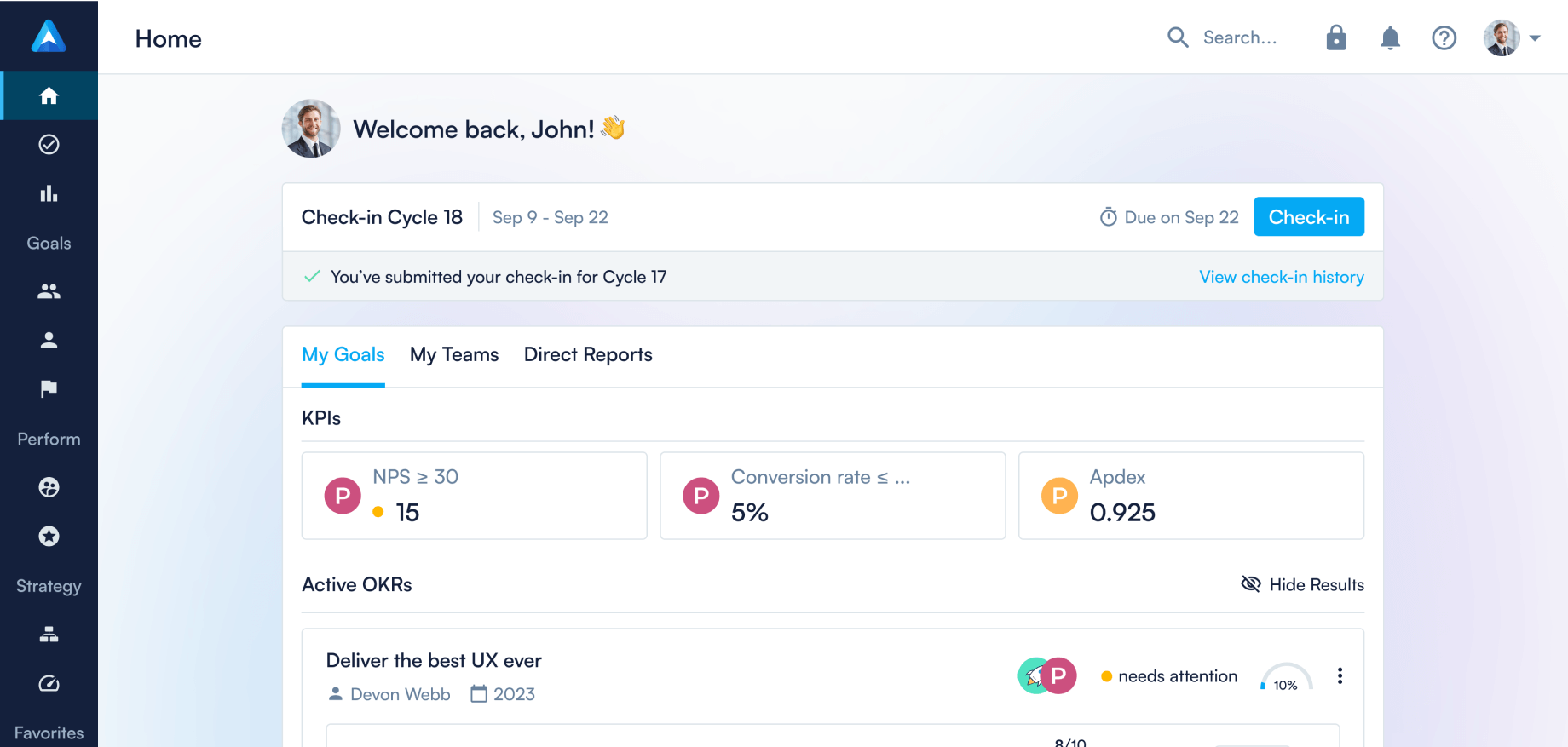
Pulse Surveys: Why they are important and how to get them right

Rather watch a video? Click here!
“Culture eats strategy for breakfast”. Ever heard that quote? It’s precisely Peter Drucker, author of the book Management by Objectives — a precursor of the OKR framework, who said this. Drucker pointed out the importance of the human factor in any company. No matter how great your strategy is, if the people who execute it don’t nurture the right culture, it is doomed to fail.
When organizations are small, it’s fairly easy for HR to keep tabs on how employees feel at work. But as organizations grow, this becomes more and more challenging. Regular Pulse surveys are a simple yet effective tool to keep a finger on employee engagement. Gallup reports that only 34% of employees are engaged in the workplace. And studies claim that disengaged employees cost their employers $500 billion a year (in the US alone). Therefore, understanding how employees feel should be a top priority for your business.
What are Pulse surveys?
Pulse surveys are frequent — ie, weekly, bi-weekly, or monthly — surveys that paint a realistic picture of company morale, and employee happiness and well-being. They’re not designed to replace the comprehensive (semi-)annual engagement surveys — they complement them. In fact, they can’t even replace them: due to their frequent nature, they must be simple and straightforward. It shouldn’t take an employee more than 30 seconds to answer.
You’re probably familiar with the annual or semi-annual engagement surveys that many organizations run, often coupled with Employee NPS (eNPS). These surveys can be quite long but do provide an in-depth view of the issues and concerns that your employees have. They also shed light on the various needs and how they can be met. While these surveys are great, they’re not in real-time. Theoretically, it could take 11 months before important issues surface, if at all. By then, chances are that the employee forgot about it — though the issue may keep brewing beneath the surface. Therefore, coupling (semi-)annual engagement surveys with frequent Pulse surveys is a much more powerful approach to collecting employee feedback.
Pulse surveys have been around for a while — they were known as “employee attitude surveys” in the 1920s. Many different formats and questions have been tested. Asking a question like “How do you feel at work?” turned out to be a great way to get a feel of how everyone is doing at work. It’s relevant to everyone, in just about any organization. Then, based on the initial response, follow up with a question for more context. That’s it, that’s all you need to open the door to meaningful, continuous feedback from employees.
You can now monitor your company’s Pulse in Perdoo. The new Pulse survey is embedded in our existing Check-in feature to make it easy for your people to regularly report on how they feel.

How Pulse surveys empower HR
HR is the heartbeat of an organization. Initiatives deployed by HR can affect many people inside the business. As Pulse surveys monitor the mood of employees on a frequent basis, these surveys can provide quick feedback on the success of such initiatives. It’s not always easy for HR to collect meaningful data, for example, if they work on an OKR. Pulse surveys instantly make your HR team data-driven.
Pulse surveys can be segmented by team or department to see if there are any patterns — positive or negative. This enables HR to provide more meaningful feedback to middle managers and help them grow into their leadership roles.
Making Pulse surveys work
Just sending out a frequent Pulse survey is not going to be enough. There are 2 important conditions that have to be met in order to unlock the full value that Pulse surveys can bring to your organization.
Get buy-in from the leadership team
Successful adoption of surveys like this start at the top. If top leadership isn’t supporting doing frequent Pulse surveys, everyone will know. And if top leadership doesn’t seem to care, everyone will think the survey is not worthy of their time since any feedback won’t be taken seriously.
So make sure your executive team is fully aware of what you’re doing, understands why you’re doing it, and what is expected of them. Even better: let your CEO announce this new initiative to your organization.
Only survey if you’ll act
As mentioned above, if employees don’t feel their feedback is taken seriously, if they don’t see how their feedback is actively being worked on, they’ll stop investing the time to share their thoughts, ideas, and concerns.
Providing useful feedback is hard. Just think about the last time you had to fill out a performance review or performance appraisal for a direct report: doing it well takes time, doesn’t it? Understand that giving effective feedback isn’t as easy as you’d think makes you value feedback received — whether it’s positive or negative — appropriately. And when you value it appropriately, you’ll understand better that you must do something with it.
“To act” doesn’t mean you have to implement the feedback. To act on feedback means that you always let people know that you’ve heard them, and — if possible — let them know why you can or can’t do something about it. Research by Deloitte has shown that employees not only value culture over compensation and benefits, but they also value a listening-based culture.
As the organization grows, you cannot comment on each and every point of course. Focus on trends and explain to everyone why.
Watch video
FAQ







